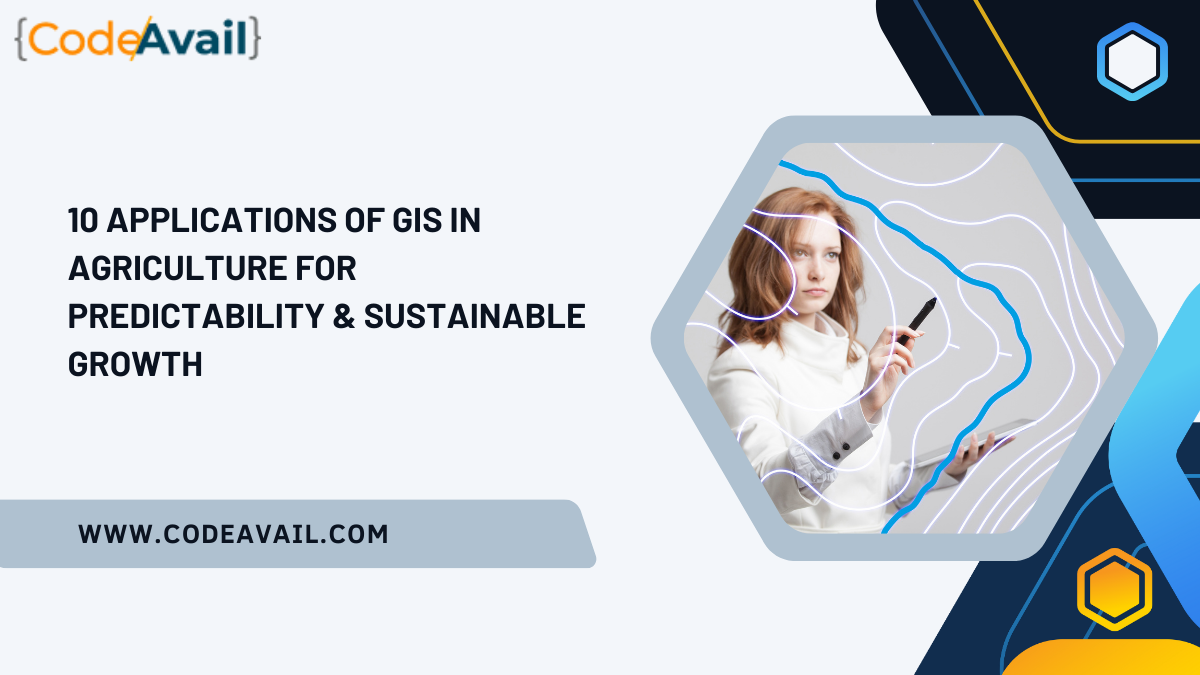
10 Applications of GIS in Agriculture for Predictability & Sustainable Growth
In the dynamic world of agriculture, the integration of Geographic Information System (GIS) technology has revolutionized the way farmers approach cultivation. GIS, a powerful tool for spatial analysis, offers an array of applications that contribute to predictability and sustainable growth in agriculture.
Note: If you are a student and struggling with your GIS Assignment, then you can get the best GIS Assignment help from our experts.
What is GIS?
GIS, or Geographic Information System, is a powerful technology that captures, analyzes, and presents spatial and geographical data. It allows users to understand, interpret, and visualize information in a geographic context. Essentially, GIS combines data from various sources, such as maps, satellite imagery, and surveys, and organizes it into layers of information. This layered approach enables users to make informed decisions by analyzing the relationships and patterns within the data. GIS finds applications in various fields, including agriculture, urban planning, environmental management, and more, making it an invaluable tool for understanding and managing our world in a spatial context.
Applications of GIS in Agriculture for Predictability & Sustainable Growth
1. Precision Farming
Enhancing Crop Yield
Precision farming employs GIS to optimize the use of resources, ensuring efficient crop production and minimizing waste.
Resource Optimization
GIS aids in the precise management of resources such as water, fertilizers, and pesticides, enhancing overall farm productivity.
2. Crop Monitoring
Disease Detection
By analyzing spatial data, GIS enables early detection of crop diseases, allowing farmers to take preventive measures.
Growth Analysis
GIS facilitates the monitoring of crop growth patterns, providing valuable insights for better decision-making.
3. Soil Management
Nutrient Mapping
GIS creates detailed maps of soil nutrients, enabling farmers to tailor their fertilizer use for optimal soil health.
Irrigation Planning
Efficient irrigation planning is made possible through GIS, ensuring water is utilized judiciously.
4. Weather Forecasting
Impact on Agriculture
GIS integrates weather data to predict climate patterns, helping farmers anticipate and mitigate potential risks.
Improved Decision Making
Farmers can make informed decisions based on real-time weather data, enhancing overall agricultural planning.
5. Supply Chain Management
Streamlining Distribution
GIS optimizes supply chain logistics, ensuring timely delivery of produce from farm to market.
Market Access
Farmers gain better market access through GIS, fostering a more efficient and transparent agricultural supply chain.
6. Pest Control
Early Detection
GIS aids in the early detection of pest infestations, allowing farmers to implement targeted intervention strategies.
Targeted Intervention
By precisely identifying affected areas, farmers can minimize the use of pesticides, promoting sustainable pest control.
7. Decision Support Systems
Data-Driven Insights
GIS serves as a powerful decision support system, providing farmers with data-driven insights for strategic planning.
Real-time Monitoring
Real-time monitoring of agricultural activities through GIS enhances the efficiency of farm management.
8. Challenges and Solutions
Technological Barriers
Overcoming technological challenges is crucial for the widespread adoption of GIS in agriculture.
Integration Solutions
Integrated systems that address interoperability issues pave the way for seamless GIS integration on farms.
9. Future Trends
Advancements in GIS Technology
Ongoing advancements in GIS technology promise even more sophisticated tools for agricultural applications.
Potential Impact on Agriculture
The future holds the potential for GIS to play an even more significant role in shaping the future of agriculture.
10. Case Studies
Successful Implementations
Examining successful case studies showcases the practical benefits of GIS in agriculture.
Lessons Learned
Understanding the lessons learned from various implementations is vital for effective GIS adoption.
Benefits for Small Farmers
Inclusive Growth
GIS promotes inclusive growth by providing small farmers with tools for effective and sustainable farming practices.
Accessibility and Affordability
As technology evolves, GIS becomes more accessible and affordable, empowering small farmers.
Environmental Impact
Sustainable Agriculture Practices
GIS contributes to the adoption of sustainable agriculture practices, minimizing environmental impact.
Conservation Efforts
By aiding in the conservation of natural resources, GIS aligns with global efforts to promote environmental conservation.
Government Initiatives
Support and Funding
Government support and funding are crucial for the widespread adoption of GIS in agriculture.
Policy Framework
A well-defined policy framework facilitates the integration of GIS into mainstream agricultural practices.
Conclusion
In conclusion, the diverse applications of GIS in agriculture underscore its transformative potential. From precision farming to environmental conservation, GIS empowers farmers with data-driven tools for informed decision-making, ultimately contributing to predictability and sustainable growth in agriculture.



